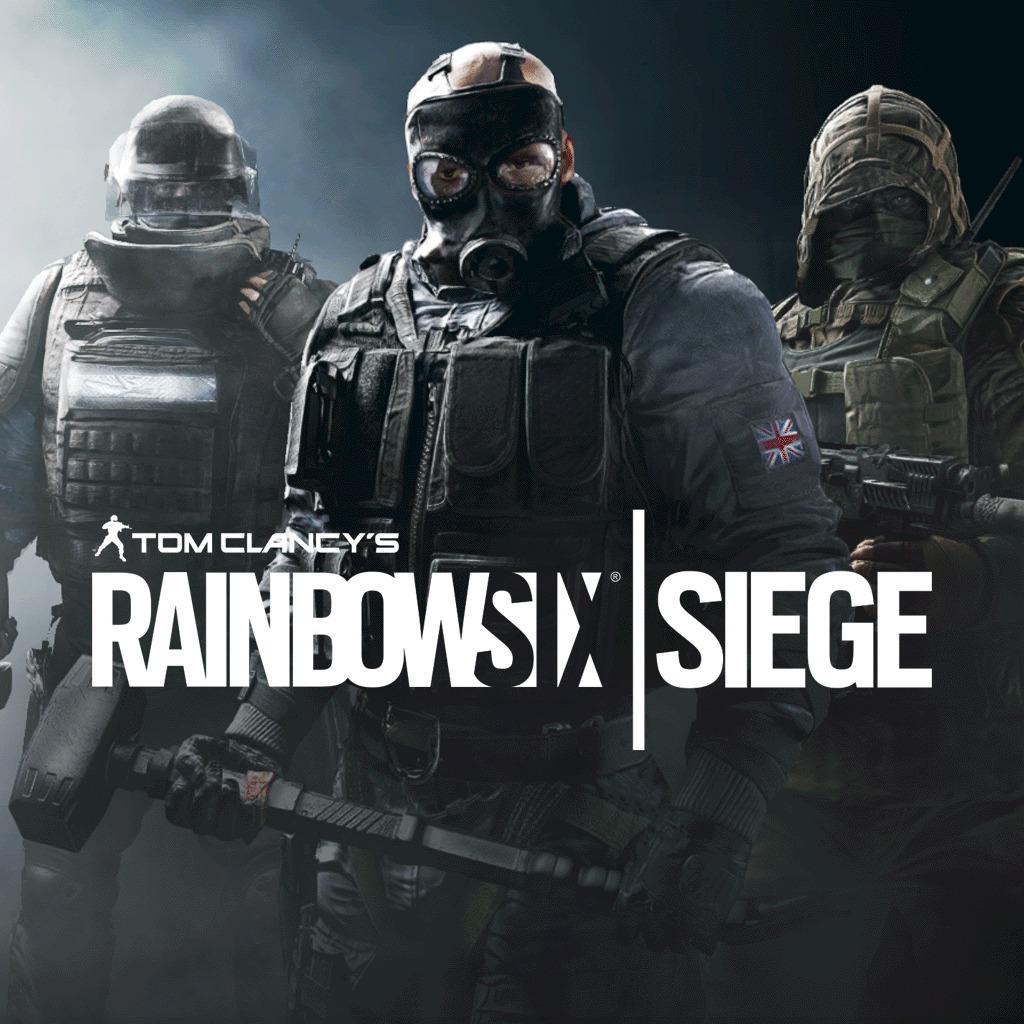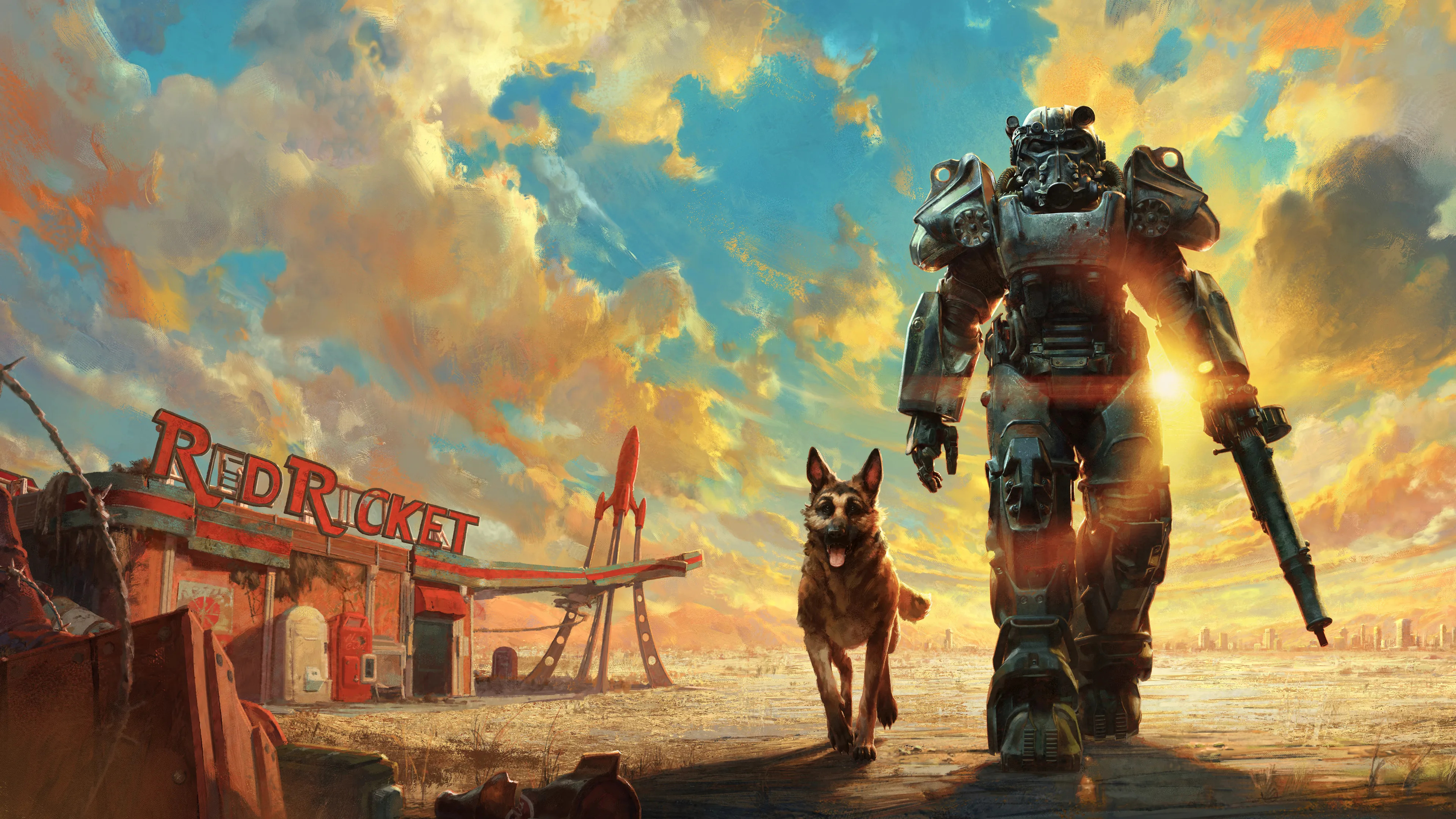How Rainbow Six Siege rank and MMR system works
How Rainbow Six Siege's rank system determines your skill — and why it can benefit you.

From thrilling tactics to competitive-primed modes, Tom Clancy's Rainbow Six Siege thrives as Ubisoft's multiplayer flagship. Continued free updates foster an avid following, with Ranked play culminating the shooter's best, rising the ranks to prove your skill. Whether a Siege newcomer or seasoned veteran, we've wrapped everything you need to top the leaderboard.
Ubisoft has introduced a new unified MMR system with the release of Operation Steel Wave. The revised MMR system drops regional ranks, with MMR gains and losses now reflected globally.
How do Rainbow Six ranks and MMR work?
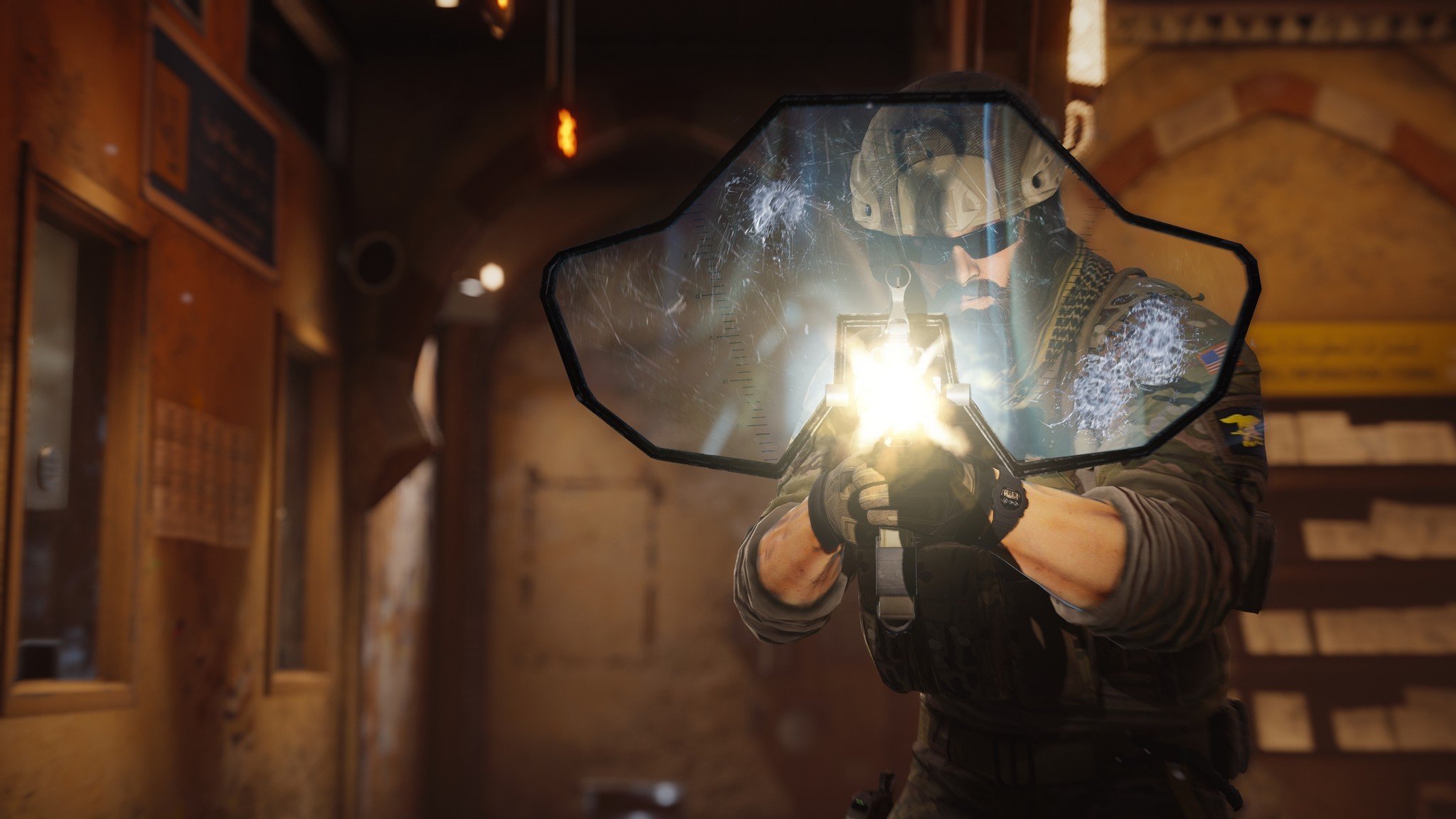
Rainbow Six Siege assigns players a tiered rank when competing in its Ranked multiplayer playlist, determined via a skill-based rating system. Utilizing an advanced algorithm, the game compiles your wins and losses across the playlist, assigning a numerical skill level, dubbed your Matchmaking Rating (MMR). Your MMR directly correlates to a rank, spanning Bronze to Champion.
Microsoft's TrueSkill technology lies at the heart of Rainbow Six Siege ranking, factoring average player skill and uncertainty, with improved accuracy the more you play. It helps determine your MMR value, which directly determines your rank via hardcoded numerical milestones.
To earn a rank in Rainbow Six Siege, players must participate in ten placement matches. Performance during these initial matches determines your level, with further fluctuations as you complete more games. However, each Rainbow Six Siege season brings a "hard" rank reset for all, resulting in a maximum of three months between each full wipe.
The latest change comes with Operation Steel Wave, shifting to a global MMR system. Rainbow Six Siege previously treated ranks on a per-region basis, allowing multiple positions on one profile. The latest seasonal refresh brings a new "unified" backend, where MMR progress is mirrored across all server regions. Moving country or playing with international friends no longer splits your rank, designed to prevent MMR abuse. For example, after completing the placement matches for your region, switching to alternative regions will bring forward your previously-earned rank.
What changes my rank in Rainbow Six Siege?
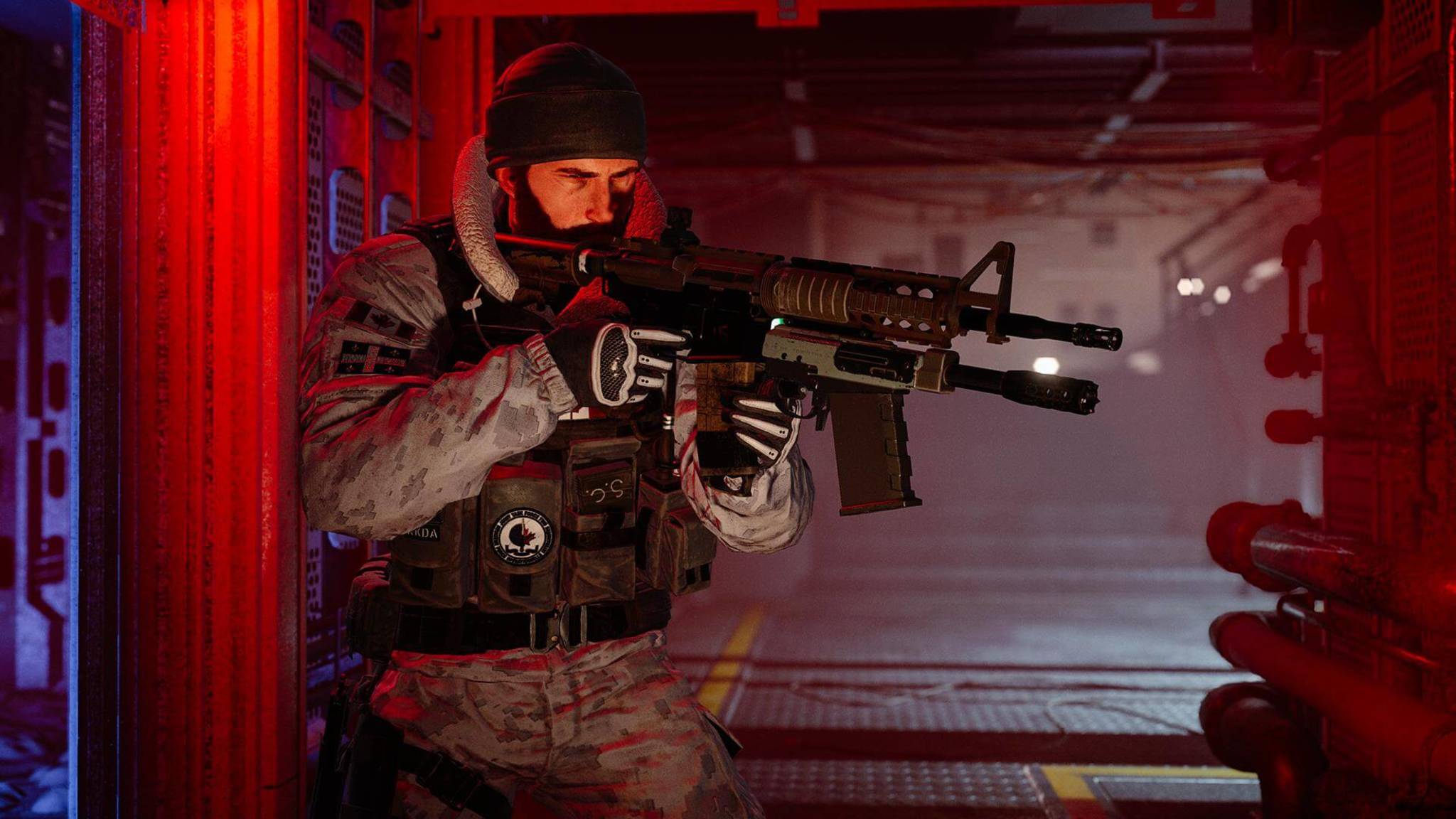
MMR and your resulting rank are calculated exclusively via wins and losses. Ubisoft's tactical shooter encourages teamplay across its five-versus-five modes, alleviating the impact of personal statistics. Kill-to-death ratio, match score, and moment-to-moment gameplay has no bearing on your rank.
All the latest news, reviews, and guides for Windows and Xbox diehards.
Keep in mind that assigned ranks are relative and determined by performance against other players in the match. The overall effect on MRR fluctuates based on players involved and overall skill of opponents. Losing a game to high-level players has a reduced impact on MRR, against losing to players below you.
Increases MMR:
- Match win
- Cheater identified in losing match
Decreases MMR:
- Match loss
- Left early
- Idle kicked
- Vote kicked
- Cheater identified in winning match
Leaving matches prematurely will also impact your MMR and rank. Quitting mid-game, idling until timed out, or getting kicked all count as a loss, even if your team goes forward to win. The only exception is server crashes and DDoS attacks, which Ubisoft now erases from ranking records if detected.
MMR can also fluctuate outside of matches, as a result of heightened anti-cheat efforts. Once Ubisoft bans players for cheating in Rainbow Six Siege, the influence on player ranks is negated. MMR can be added and removed, based on the result of impacted matches.
List of Rainbow Six Siege Ranks and MMR Requirements
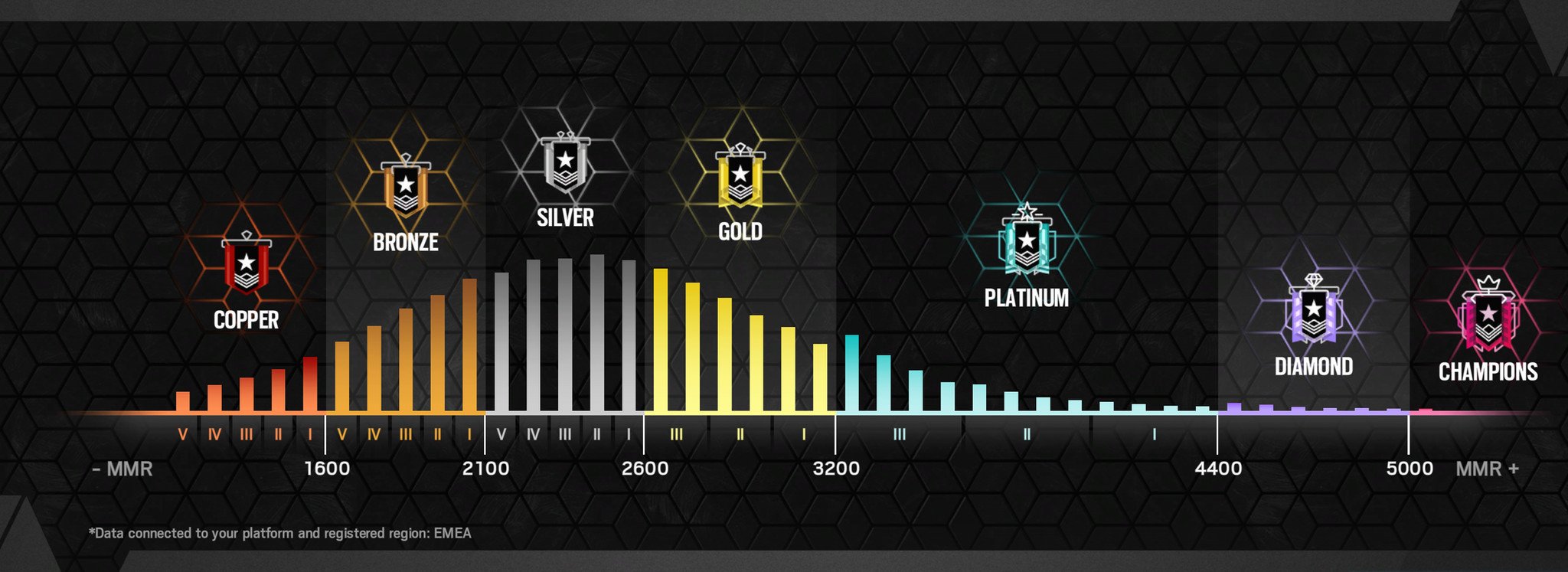
Rainbow Six Siege features 23 individual ranks across seven brackets in 2019, most recently broadened via the Champions tier with Operation Ember Rise. The game adopts an element-themed system, with each rank assigned an MMR threshold, outlining a transparent progression path.
Entry-level play opens with Copper rank, followed by Bronze, Silver, Gold, and Platinum, each featuring three to five sub-tiers. Diamond represents the elite of Rainbow Six, while Champions feature the world's leading talent above 5,000 MMR, with a minimum of 100 matches. Champions are distinguished with personal rank numbers for the top 9,999, crowning the highest MMR earner the global number one.
Below is a roundup of Rainbow Six Siege ranks and their associated MMR milestones.
- Copper V (1,100)
- Copper IV (1,200)
- Copper III (1,300)
- Copper II (1,400)
- Copper I (1,500)
- Bronze V (1,600)
- Bronze IV (1,700)
- Bronze III (1,800)
- Bronze II (1,900)
- Bronze I (2,000)
- Silver V (2,100)
- Silver IV (2,200)
- Silver III (2,300)
- Silver II (2,400)
- Silver I (2,500)
- Gold III (2,600)
- Gold II (2,800)
- Gold I (3,000)
- Platinum III (3,200)
- Platinum II (3,600)
- Platinum I (4,000)
- Diamond (4,400)
- Champions (5,000+)
Future changes to rank brackets will be reflected above once live for all.
What is MMR Rank Adjustment?
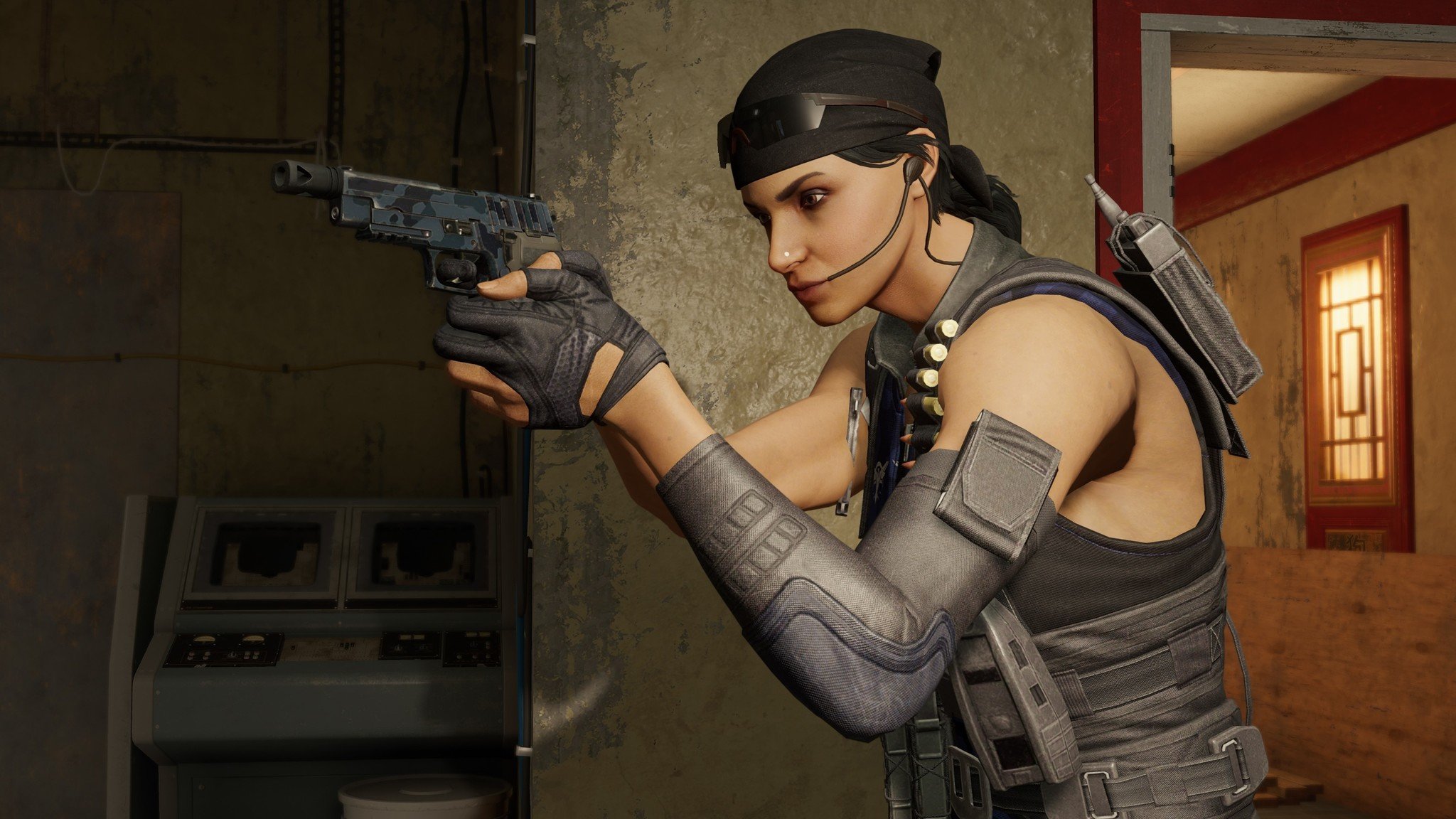
Spend time in Rainbow Six Siege's Ranked scene, and you'll encounter MMR rollback, one of the latest measures to crack down on cheaters. Amid increased efforts to counter the rise of hacking, boosting, among other in-game exploits, the system sets out to mitigate the effect of cheating across Ranked play.
MMR roll back kicks in when Ubisoft identifies and bans cheaters, an increasingly regular occurrence as popularity soars. The system retroactively adjusts MMR adjustments for players in affected matches, essentially wiping afflicted statistics from the current season.
Match status is wiped regardless of the final result, also revoking MMR earned from a win if a cheater was present on either team. Although Ubisoft has experimented with saving matches where cheaters lost, it found a significant imbalance in overall MMR distribution. While frustrating at times, it demonstrates continued efforts to maintain fair play.
What is MMR Rank Lock?
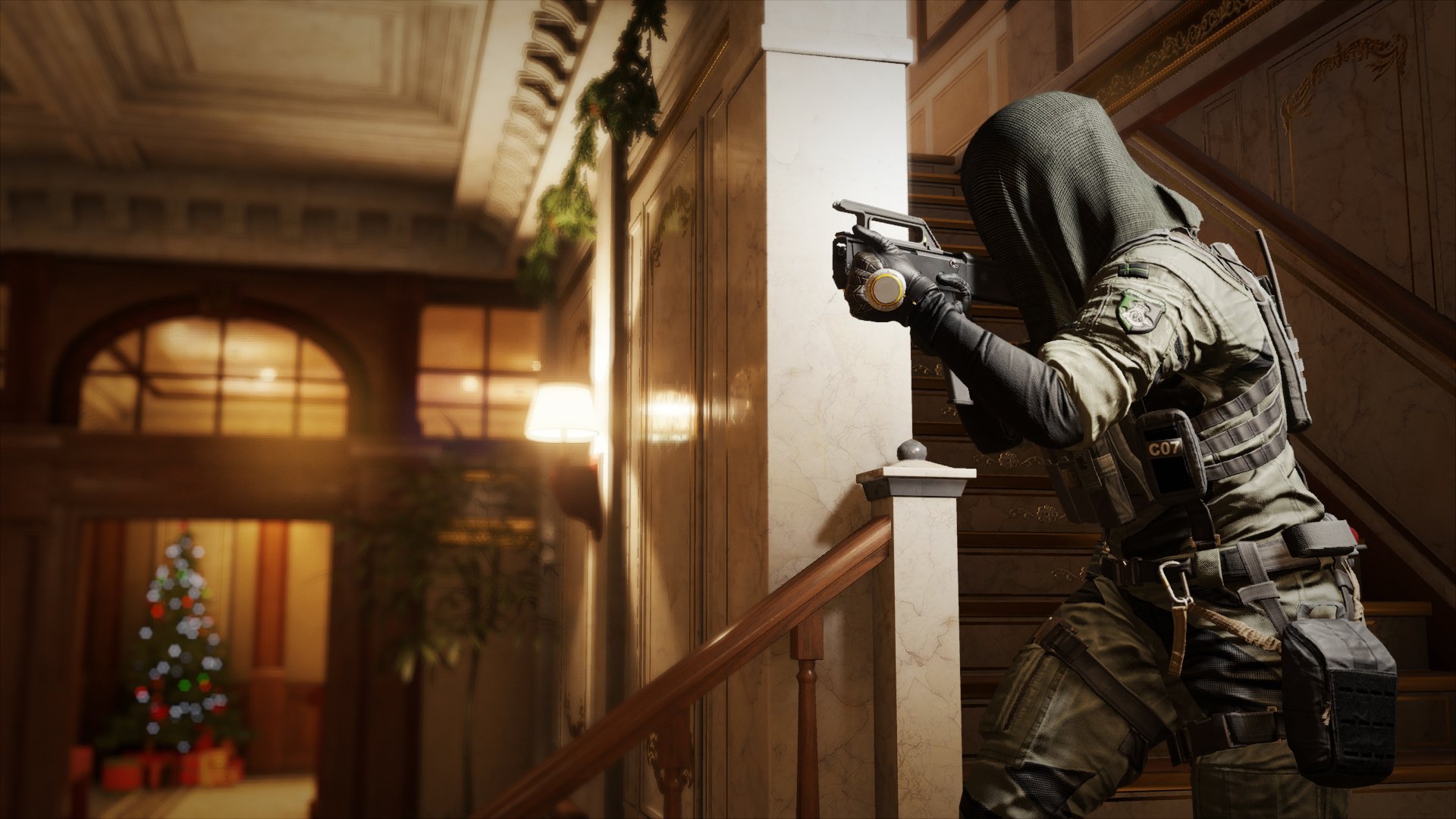
Ember Rise also set out to achieve more accurate ranks, bringing the latest pushback against boosting. With a vast range of skills across the ranking system, queuing parties could offset matchmaking balancing, allowing players of any skill gap to party up. The feature is the first effort combatting this impact, limiting players to groups with similarly-skilled allies.
MMR lock prevents players from playing Ranked when further than 1,000 MMR apart, which generally correlates to four to ten ranks. It helps avoid those disparities but offers some flexibility to keep friends together. For those who regularly play with the same squad, all should fall into compatible MMR brackets. As the first season with MMR lock, the broader impact is yet to be seen.
Year 5 is here
Rainbow Six Siege has kicked off its latest Operation Steel Wave, including a fresh lineup of Ranked adjustments. With Year 5 Season 3 slated for the months ahead, the next formal reset is expected in September.

Matt Brown was formerly a Windows Central's Senior Editor, Xbox & PC, at Future. Following over seven years of professional consumer technology and gaming coverage, he’s focused on the world of Microsoft's gaming efforts. You can follow him on Twitter @mattjbrown.
